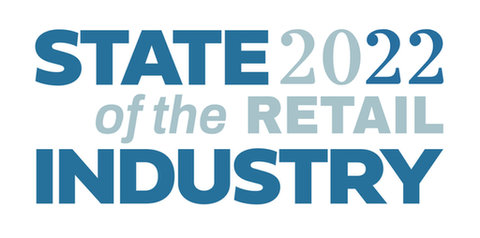
What’s ahead for retail?
Over the last two years, the retail industry has seen a fast, far and wide shift from physical retail practices to omnichannel retail and digital commerce. In the next year, there is no doubt that the retail industry will continue to shift from physical to digital. For example, one of enVista’s clients, a leading specialty retailer in health and nutrition completed a successful digital transformation at the beginning of 2020, accelerating omnichannel agility, rapidly deploying buy online, pick up in-store (BOPIS) and reducing transportation costs and the vendor footprint along the way. This is just one example of large, omnichannel organizations that made significant investments in digital retail processes and ecommerce as a result of the pandemic and changing customer shopping habits. I expect this to continue into the future, even as shoppers become more comfortable returning to stores. In the next five years, ecommerce and brand sales will be 30% of all retail sales. Additionally, wholesale is becoming the new retail to drive revenue, and retail is becoming the wholesale to improve gross margins.
Stores should also expect to carry less inventory, only keeping what they need as visual merchandise. If there is a micro-fulfillment center within 60 to 90 miles of the customer, then same or next-day delivery will be crucial. This gives retailers the opportunity to reduce their inventory foot print.
Order Management System (OMS) is the cornerstone of the successful merging of physical and digital commerce. In addition to this, new retail technology that combines point of sale (POS), OMS and last mile delivery is mission critical.
- Jim Barnes, CEO, enVista

Enabling technology for physical and digital retail
Due to this quick shift to omnichannel retail and the expectation that it is here to stay, omnichannel organizations are investing in critical software that will enable these processes as seamlessly as possible. One software system that is non-negotiable is an agile, cloud-based order management system (OMS). An OMS will enable seamless omnichannel shopping options such as BOPIS, curbside pickup and ship-from-store, all with a seamless customer experience. It will also enable inventory visibility throughout the entire organization, ensuring available to promise (ATP) inventory at all times. This software solution is the cornerstone of the successful merging of physical and digital commerce. With that said, new retail technology that combines point of sale (POS), OMS and last mile delivery is mission critical. Having a POS that is not tied to your OMS is like having an ATM that is not connected to your bank.
Conclusion
Traditional retail is not going away. Customers are not going to stop visiting physical stores. However, retailers that merge digital and physical to create an experience that leaves a lasting impression where the customer feels connected with the brand are going to come out winners.














Jim Barnes is CEO of global software solutions and consulting services firm, enVista. Jim is a leading expert in unified commerce and supply chain management who has spent the last 25 years deploying supply chain and enterprise solutions to help unify commerce and improve profitability for Fortune 500 brands and retail companies. His expertise includes all areas within the extended supply chain, including unified commerce, global supply chain network design, strategic facility design, international and domestic transportation management, labor management, organizational change management and supporting supply chain and execution technologies.
In 2014, Barnes recognized a critical need for nearly all omni-channel retailers - the ability to more rapidly and cost-effectively deploy unified commerce solutions to optimize the customer experience and engagement. Barnes was immediately moved to build from the ground up and launch a full suite of omni-channel solutions on a single platform and integration framework. Today, enVista’s unified commerce platform is recognized by leading analyst firms and currently being used by today’s top retailers to rapidly enhance customer engagement and unify commerce operations.
He is a recognized industry thought leader, having presented at National Retail Federation’s Big Show, Operations Summit, ProMat, MODEX, PARCEL Forum, the Retail Industry Leaders Association Supply Chain Conference, and enVista’s annual client conference, FUEL.